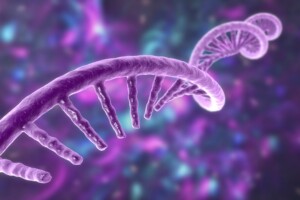
mRNA: A New Option for Vaccines and Therapies
The use of mRNA for vaccines and therapeutics is being explored due to the advantages that the technology presents, and the promise of mRNA was demonstrated by COVID-19 vaccines, which provided a pathway for future therapeutics to employ this technology. The foremost advantage of the technology is that it can be rapidly developed and the manufacturing process for mRNA can be scaled up more quickly than other biologics.
Wai Lam W. Ling, Ph.D., VP Scientific Advisory at Catalent Biologics, answered some frequently asked questions about mRNA and its use in vaccines and therapeutics.
Why did mRNA gain traction during the COVID-19 pandemic?
Prior to the pandemic, several companies were already investigating mRNA as a means of creating potential therapies and vaccines. During the COVID-19 pandemic, several companies used this technology to develop mRNA-based COVID-19 vaccines. Since the pandemic, many people are very familiar with mRNA and its application to create vaccines.
What other indications is mRNA being evaluated for besides COVID-19?
Here too, even prior to the pandemic, mRNA therapies were being developed to treat a variety of diseases, such as cancer, cystic fibrosis, lung diseases, and cardiac diseases. Additionally, mRNA vaccines were being developed to prevent infectious diseases, targeting pathogens such as flu virus, cytomegalovirus, and others.
Another application of mRNA has been its use for personalized cancer vaccines; mRNA can be developed to train the immune system to target the specific markers on a patient’s tumor and help the body identify and rid itself of tumorigenic cells.
In the face of millions of deaths and the serious illness caused by COVID-19 and its variants, the unprecedented and accelerated development and approval of vaccines contributed to significant growth in the pipeline of mRNA-based vaccines and therapies.
What are the challenges in the mRNA market?
The manufacturing process for mRNA is unique from other biologics, so the industry is still coming up to speed and training scientists on how to develop and scale these manufacturing processes. mRNA is less stable than other biologics, so it can be a challenge to develop mRNA therapies and vaccines that are stable enough to withstand shipment and storage long enough to be delivered to patients. There is a lot of innovation right now of new technologies to help overcome this challenge, and the future for mRNA looks very bright.
How can Catalent support mRNA therapeutics and vaccines?
Catalent has the capabilities to support mRNA development and manufacturing from plasmid DNA to in vitro transcription and purification, to lipid nanoparticle formulation to fill/finish, and clinical and commercial supply, and also provide the analytical expertise to characterize mRNA and lipid nanoparticle (LNP) products. Our facilities in North America and Europe are designed with the flexibility to provide the scale and process that is best for each mRNA product, and our teams have deep expertise in mRNA development, manufacturing, analytical testing, and characterization.
For more information, please see https://biologics.catalent.com/specialty/mrna/
or more information, please see: https://biologics.catalent.com/specialty/mrna/
Don’t miss our other mRNA Ask the Expert Sessions:
mRNA Development and Manufacturing: CMC Challenges and Solutions
In our Ask the Expert with Jingtao Zhang, he discusses the increased demand for mRNA-based vaccines and treatments and the challenges associated with mRNA manufacturing. We talk about solutions including building additional GMP capability dedicated to mRNA processes, integrated development and manufacturing capabilities for plasmid DNA, mRNA, lipid nanoparticles, fill finish, and clinical supply services as well as analytical testing and characterization capabilities for this complex modality.
 The Unique Challenges of Lipid Nanoparticle Development and Manufacturing
The Unique Challenges of Lipid Nanoparticle Development and Manufacturing
In our Ask the Expert with Jingtao Zhang he answers frequently asked questions about the challenges with lipid nanoparticle development and manufacturing. We discussed the difficulties with LNP formulation development and manufacturing including large scale CGMP manufacturing which requires improvements to standardization, scalability, and reproducibility as the industry expands use of mRNA technology to multiple therapeutic applications.
About the Expert
 Wai Lam W. Ling, Ph.D., VP Scientific Advisory, Catalent
Wai Lam W. Ling, Ph.D., VP Scientific Advisory, Catalent
Dr. Ling brings with her more than 25 years of experience in biologics development, including cell and gene therapies. Prior to Catalent, Dr. Ling worked for Rocket Pharma, where she held the role of Head of Manufacturing, Science and Technology. Previously she worked at Merck & Co. (MSD), where she led biologics CMC development and supported regulatory filing, and before that she was at Schering-Plough Corp., where she worked on adenoviral gene therapy development and manufacturing prior to transitioning to biologics.
Dr. Ling earned her Bachelor of Science degree in Biochemistry from the University of California, Los Angeles, and her Doctorate in Pharmacology from the Rutgers University. Dr. Ling also completed a post-doctoral research fellowship at the Albert Einstein College of Medicine, New York.